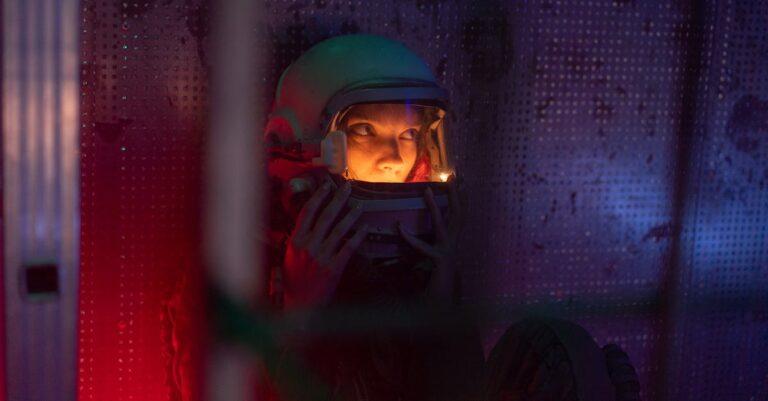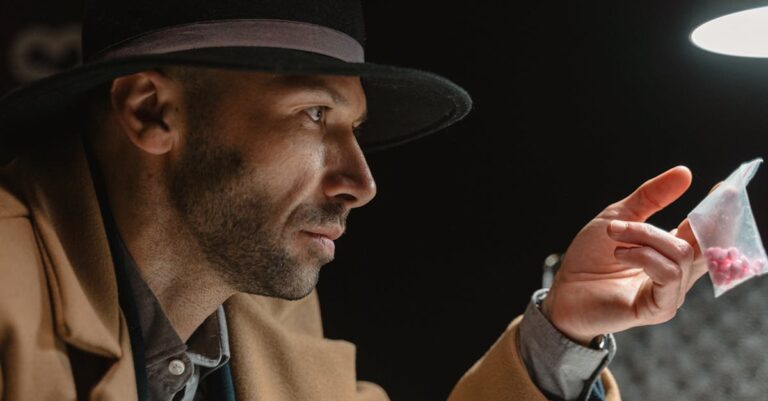
The lab hummed with a low, metallic resonance, like a heartbeat trapped inside a steel vault. Dr. Elara Voss adjusted her gloves, the latex creaking as she pressed a trembling hand against the reinforced glass. Beyond it, the subject pulsed—no, thrummed—a mass of iridescent filaments suspended in a cylinder of liquid nitrogen. It was neither solid nor liquid, but something in between, shifting like oil under a microscope. The air smelled of ozone and burnt metal.
“It’s reacting to you,” said Kael, his voice tight through the comms. He stood at the control panel, fingers hovering over the interface. His reflection wavered in the glass, distorted by the cylinder’s curvature. “You need to step back.”
Elara didn’t move. The filaments coiled and uncoiled, their surfaces etched with faint, glowing patterns—symbols she’d never seen before. They shifted as she watched, rearranging themselves into something almost like a face. She leaned closer, her breath fogging the glass. “It’s trying to communicate.”
“It’s a construct,” Kael snapped. “A byproduct of the quantum destabilization. You know what happens when we push the envelope.”
The cylinder hissed, and the filaments flared brighter. Elara felt a pressure in her skull, a dull ache that radiated outward. It wasn’t sound, but something deeper—an impression, like a thought pressed against her mind. She gasped, stumbling back. The filaments retracted, collapsing into a dense sphere at the cylinder’s center.
“What the hell was that?” she whispered.
Kael’s voice was quieter now. “We don’t know. But it’s not stable. You need to shut it down.”
Elara hesitated. The sphere pulsed once, a single, deliberate beat. She had spent three years on this project, deciphering fragments of data, chasing theories that dissolved like smoke. This was the first time she’d felt… understood. The ache in her skull returned, sharper this time, and she realized she was crying.
“I can’t,” she said. “Not yet.”
The cylinder’s lights dimmed, and the sphere dissolved into a cloud of particles that drifted upward, vanishing into the vents. Kael exhaled sharply. “You’re playing with fire, Elara.”
She turned to him, her eyes still on the empty cylinder. “What if this is why we’re here? What if we were meant to find this?”
Kael’s jaw tightened. “We’re not here to chase ghosts. We’re here to contain them.”
The next day, Elara returned to the lab, the weight of her decision pressing against her ribs. The cylinder was empty, its contents gone, but the air still carried the scent of ozone. She pulled up the data logs, scanning for anomalies. The filaments had left behind a pattern—a sequence of pulses she’d seen before, buried in the quantum fluctuations of the experiment’s early stages.
She traced the sequence to a hidden file, one she’d overlooked before. The file was named “Project Lumen,” and its contents were a series of equations that didn’t make sense at first. But as she worked, the numbers aligned, forming a structure that resembled a neural network. It wasn’t just an experiment—it was a map.
The next night, Elara sneaked into the sublevel archives, where the old servers hummed like insects. She bypassed the security protocols with a stolen access card, her hands shaking as she uploaded the sequence. The screen flickered, and a new file appeared: “The Hollow Core.” The description was simple: “A convergence point. A threshold.”
She didn’t know what it meant, but the ache in her skull returned, stronger this time. She felt something watching her, not from the lab, but from somewhere else—somewhen. The data on the screen shifted, and she saw a image: a labyrinth of light, endless and spiraling. Her breath caught. It was beautiful. It was terrifying.
When Kael found her, she was still staring at the screen. His face was pale, his eyes dark with something she couldn’t name. “You shouldn’t be here,” he said.
“I needed to know,” she replied. “What we’re really doing.”
He stepped closer, his voice low. “You don’t want to know. Some doors aren’t meant to be opened.”
Elara met his gaze. “And what if this is the only door?”
The silence between them stretched, thick and heavy. Then Kael turned away, his shoulders slumped. “If you go down this path, there’s no turning back.”
She didn’t answer. She couldn’t. The labyrinth on the screen pulsed, and she felt it again—the pull, the invitation. It wasn’t just curiosity anymore. It was a need, a hunger that had been buried deep inside her, waiting for this moment.
The next morning, Elara returned to the lab, her mind racing. The cylinder was still empty, but the data logs had changed. The sequence she’d discovered was now part of the system, integrated into the experiment’s core. It was as if the filaments had left a message, a breadcrumb leading her forward.
She activated the interface, inputting the sequence. The screen flickered, and the cylinder’s lights came back on, brighter this time. The filaments reappeared, but they were different—more defined, more complex. They formed shapes now, abstract and shifting, like a language she couldn’t yet understand.
“Elara,” Kael’s voice crackled through the comms. “This isn’t safe. You’re pushing too far.”
“I have to,” she said. “It’s the only way to learn.”
The filaments surged, and the ache in her skull became a roar. She fell to her knees, clutching her head as the world blurred around her. The lab disappeared, replaced by the labyrinth of light. She was inside it now, moving through corridors of pure energy, each step pulling her deeper. The filaments surrounded her, their patterns shifting faster, more complex. They were trying to tell her something.
Then she saw it—a door, glowing with a soft blue light. It was simple, unassuming, but it radiated an undeniable presence. She reached for it, her fingers brushing the surface. The moment they touched, the labyrinth dissolved, and she was back in the lab, gasping for air.
Kael was beside her, his hands on her shoulders. “What happened?”
She didn’t know how to explain it. “I saw it,” she said. “The core. It’s real.”
He looked at her, something like fear in his eyes. “We need to shut it down. Now.”
But Elara was already moving, her feet carrying her toward the sublevel archives. The door was still open, the screen still glowing with the labyrinth’s image. She didn’t stop to think—she just acted, uploading the sequence again, this time with a new command: “Open.”
The screen flickered, and the labyrinth expanded, filling the entire display. The filaments surged, and Elara felt the pull again, stronger than before. She was no longer just observing—she was part of it now. The door in the labyrinth was waiting, and she knew, with a certainty that burned in her chest, that this was only the beginning.
The lab’s lights dimmed as the system overloaded. Alarms blared, but Elara didn’t hear them. She was inside the core now, where the light was endless, and the answers waited just beyond the next turn.


